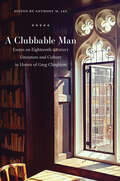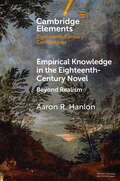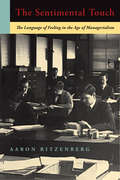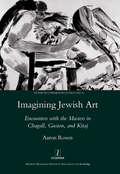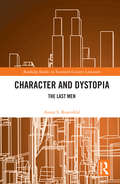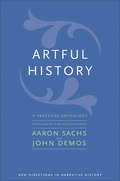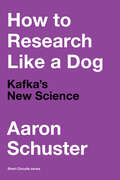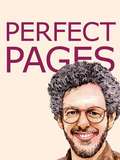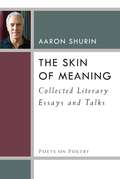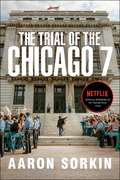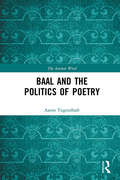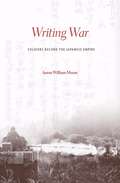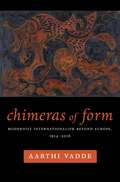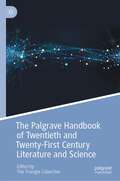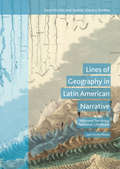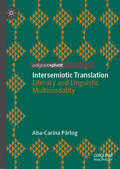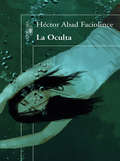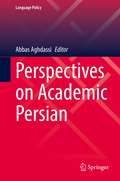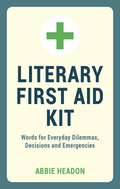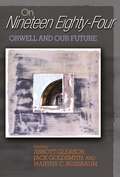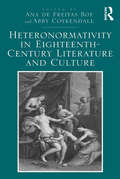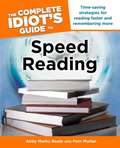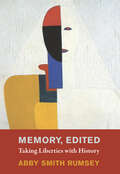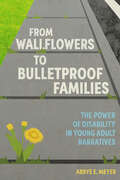- Table View
- List View
Clubbable Man: Essays on Eighteenth-Century Literature and Culture in Honor of Greg Clingham
by David Hopkins Antjie Krog Harry Thomas Margaret Williams John Richetti Philip Smallwood Adam Rounce Kate Parker Elaine Wood Clement Hawes James Rice Daniel Little Gordon Turnbull Adam Walker Kevin L. Cope Anthony W Lee Cedric D. II Bärbel Czennia Robert G. Walker Aaron R. Hanlon Martine Brownley Dominic Jermey Caroline Fassett Joseph McNicholas Erin Labbie Patrick Thomas Henry Kang Tchou Gary Sojka Nina Forsberg John Rickard Kieron Winn Emily GrosholzSamuel Johnson famously referred to his future biographer, the unsociable magistrate Sir John Hawkins, as “a most unclubbable man." Conversely, this celebratory volume gathers distinguished eighteenth-century studies scholars to honor the achievements, professional generosity, and sociability of Greg Clingham, taking as its theme textual and social group formations. Here, Philip Smallwood examines the “mirrored minds” of Johnson and Shakespeare, while David Hopkins parses intersections of the general and particular in three key eighteenth-century figures. Aaron Hanlon draws parallels between instances of physical rambling and rhetorical strategies in Johnson’s Rambler, while Cedric D. Reverand dissects the intertextual strands uniting Dryden and Pope. Contributors take up other topics significant to the field, including post-feminism, travel, and seismology. Whether discussing cultural exchange or textual reciprocities, each piece extends the theme, building on the trope of relationship to organize and express its findings. Rounding out this collection are tributes from Clingham’s former students and colleagues, including original poetry.
Empirical Knowledge in the Eighteenth-Century Novel: Beyond Realism (Elements in Eighteenth-Century Connections)
by Aaron R. HanlonThis Element examines the eighteenth-century novel's contributions to empirical knowledge. Realism has been the conventional framework for treating this subject within literary studies. This Element identifies the limitations of the realism framework for addressing the question of knowledge in the eighteenth-century novel. Moving beyond the familiar focus in the study of novelistic realism on problems of perception and representation, this Element focuses instead on how the eighteenth-century novel staged problems of inductive reasoning. It argues that we should understand the novel's contributions to empirical knowledge primarily in terms of what the novel offered as training ground for methods of reasoning, rather than what it offered in terms of formal innovations for representing knowledge. We learn from such a shift that the eighteenth-century novel was not a failed experiment in realism, or in representing things as they are, but a valuable system for reasoning and thought experiment.
The Sentimental Touch: The Language of Feeling in the Age of Managerialism
by Aaron RitzenbergBetween 1850 and 1940, with the rise of managerial capitalism in the United States, the most powerful businesses ceased to be family owned, instead becoming sprawling organizations controlled by complex bureaucracies. Sentimental literature—work written specifically to convey and inspire deep feeling—does not seem to fit with a swiftly bureaucratizing society. Surprisingly, though, sentimental language persisted in American literature, even as a culture of managed systems threatened to obscure the power of individual affect.The Sentimental Touch explores the strange, enduring power of sentimental language in the face of a rapidly changing culture. Analyzing novels by Harriet Beecher Stowe, Mark Twain, Sherwood Anderson, and Nathanael West, the book demonstrates that sentimental language changes but remains powerful, even in works by authors who self-consciously write against the sentimental tradition. Sentimental language has an afterlife, enduring in American literature long after authors and critics declared it dead, insisting that human feeling can resist a mechanizing culture and embodying, paradoxically, the way that literary conventions themselves become mechanical and systematic.
Imagining Jewish Art: Encounters with the Masters in Chagall, Guston, and Kitaj
by Aaron RosenShort-listed for the Art and Christian Enquiry/Mercers' International Book Award 2009: 'a book which makes an outstanding contribution to the dialogue between religious faith and the visual arts'. What does modern Jewish art look like? Where many scholars, critics, and curators have gone searching for the essence of Jewish art in Biblical illustrations and other traditional subjects, Rosen sets out to discover Jewishness in unlikely places. How, he asks, have modern Jewish painters explored their Jewish identity using an artistic past which is- by and large - non-Jewish? In this new book we encounter some of the great works of Western art history through Jewish eyes. We see Matthias Grunewald's Isenheim Altarpiece re-imagined by Marc Chagall (1887-1985), traces of Paolo Uccello and Piero della Francesca in Philip Guston (1913-1980), and images by Diego Velazquez and Paul Cezanne studiously reworked by R.B. Kitaj (1932-2007). This highly comparative study draws on theological, philosophical and literary sources from Franz Rosenzweig to Franz Kafka and Philip Roth. Rosen deepens our understanding not only of Chagall, Guston, and Kitaj but also of how art might serve as a key resource for rethinking such fundamental Jewish concepts as family, tradition, and homeland.
Character and Dystopia: The Last Men (Routledge Studies in Twentieth-Century Literature)
by Aaron S. RosenfeldThis is the first extended study to specifically focus on character in dystopia. Through the lens of the "last man" figure, Character and Dystopia: The Last Men examines character development in Yevgeny Zamyatin’s We, Anthony Burgess’s A Clockwork Orange, Kazuo Ishiguro’s Never Let Me Go, Fyodor Dostoevsky’s Notes from Underground, George Orwell’s Nineteen Eighty-Four, Nathanael West’s A Cool Million, David Mamet’s Glengarry Glen Ross, Octavia Butler’s Parable of the Sower, Lois Lowry’s The Giver, Michel Houellebecq’s Submission, Chan Koonchung’s The Fat Years, and Maggie Shen King’s An Excess Male, showing how in the 20th and 21st centuries dystopian nostalgia shades into reactionary humanism, a last stand mounted in defense of forms of subjectivity no longer supported by modernity. Unlike most work on dystopia that emphasizes dystopia’s politics, this book’s approach grows out of questions of poetics: What are the formal structures by which dystopian character is constructed? How do dystopian characters operate differently than other characters, within texts and upon the reader? What is the relation between this character and other forms of literary character, such as are found in romantic and modernist texts? By reading character as crucial to the dystopian project, the book makes a case for dystopia as a sensitive register of modern anxieties about subjectivity and its portrayal in literary works.
Artful History: A Practical Anthology (New Directions in Narrative History)
by John Demos Aaron SachsA collection of memorable, stirring, and eloquent historical essays, designed to help any historian write more artfully Is there any reason that serious historical scholarship cannot receive literary expression? Isn&’t it possible that the most committed empiricists and postmodernists might both achieve better results by thinking of writing as a craft, rather than just a means of packaging research? This book compiles some of the most compelling efforts to make history writing eloquent, stirring, and memorable, in the realms of both practice and theory. The authors included here prove the great potential of approaching the writing of history as a literary art, even as they retain a commitment to rigorous scholarship. The collection shows how historians can aspire to find a form that matches and enhances their substance, nudging readers toward what historian John Clive called the &“spell that lingers in the memory and is conducive not just to reading but to rereading.&” With selections from: Jonathan Spence, Simon Schama, Saidiya Hartman, Wendy Warren, Jill Lepore, Louis Masur, Jane Kamensky, and John Demos, among others.
How to Research Like a Dog: Kafka’s New Science (Short Circuits)
by Aaron SchusterA provocative book that proposes a new and surprising inspiration for philosophy today—the canine thinker from Kafka&’s story &“Investigations of a Dog.&” Written toward the end of Kafka&’s life, &“Investigations of a Dog&” (Forschungen eines Hundes, 1922) is one of the lesser-known and most enigmatic works in the author&’s oeuvre. Kafka&’s tale of philosophical adventure is that of a lone, maladjusted dog who challenges the dogmatism of established science and pioneers an original research program in pursuit of the mysteries of his self and his world. In How to Research Like a Dog, Aaron Schuster uses the canine as a guide dog to rediscover Kafka&’s fictional universe, while taking up the cause of this ingenious, possessed, melancholy, comical, and revolutionary thinker.Neither an exercise in literary criticism nor a traditional philosophical commentary, this charming and idiosyncratic book aligns itself with the research program of Kafka&’s dog. It constructs an &“impossible&” system based on the fourfold division of nourishment, music, incantation, and freedom—or, stated a bit differently: enjoyment, art, institutions, and freedom. From Plato to Flaubert, Lispector, and Lacan, Schuster puts the dog in dialogue with psychoanalytic theory, the history of philosophy, and modern literature. Imagining the &“Unknown University&” that Kafka&’s new science calls for, the book enlists new comrades in the dog&’s struggle.
Perfect Pages: Self Publishing with Microsoft Word, or How to Design Your Own Book for Desktop Publishing and Print on Demand (Word 97-2003 For Windows, Word 2004 For Mac)
by Aaron ShepardNowadays, new technologies and services have made it easier than ever to publish your book, but there's one question you may still face: Do I need an expensive page layout program, or can I just use a word processor like Microsoft Word? With this book as guide, you'll soon be producing pages from Word that no reviewer will scoff at. Aaron Shepard is a foremost proponent of the new business of profitable self publishing through print on demand, which he has practiced and helped develop since 1998. Unlike most authorities on self publishing, he makes the bulk of his living from his self-published books -- not from consulting, speaking, freelance writing, or selling publishing services. In a parallel life, Aaron is an award-winning children's author with numerous picture books from publishers both large and small. He lives in Friday Harbor, Washington, in the San Juan Islands, with his wife and fellow author, Anne L. Watson. "If you want to make your layout and formatting as unproblematic as possible and you don't want to shell out $1-$2k for someone else to do it for you, then add this book to your library. . . . Using this book, I've found page layout pretty fun and now look forward to that part of the process. " -- Zoe Winter, Indie Books Journal (blog of IndieReader. com), Apr. 12, 2010 "If you want to use MS Word for typesetting, you really, really should own a copy of Aaron Shepard's book Perfect Pages. Nobody knows more about making Word produce acceptably typeset books. " -- Walt Shiel, From the Publisher's Desk, Aug. 27, 2007 "If you are a self-publisher, the biggest favour you can possibly do for yourself is to learn how to present your work to its best possible advantage. And in that regard, Aaron Shepard is an invaluable aid. " -- Michael Allen, Grumpy Old Bookman, Apr. 17, 2007 "Excellent not only as a guide to using Word to design books, but also as a concise guide to book design. " -- Morris Rosenthal, author, Print-on-Demand Book Publishing "On target . . . . Concisely addresses a lot of topics that Word users need to know about. " -- James Felici, author, The Complete Manual of Typography
The Skin of Meaning: Collected Literary Essays and Talks
by Aaron ShurinIn The Skin of Meaning, Aaron Shurin has collected thirty years' worth of his provocative essays. Fueled by gender and queer studies and combined with radical traditions in poetry, Shurin's essays combine a highly personal and lyrical vision with a trenchant social analysis of poetry's possibilities. Whether he's examining innovations in poetic form, analyzing the gestures of drag queens, or dissecting the language of AIDS, Shurin's writing is evocative, his investigations rigorous, and his point of view unabashed. Shurin's poetic practice braids together many strands in contemporary, innovative writing, from the San Francisco Renaissance to Language Poetry and New Narrative Writing. His mentor-ships with Robert Duncan and Denise Levertov; his studies at New College of California, where he was the first graduate of the epochal Poetics Program; and his years of teaching writing provide a rich background for these essays. San Francisco provides the color and context for formulations of "prosody now," propositions of textual collage, and theories of radical narrativity, while the heart of the book searches through the dire years of the AIDS epidemic to uncover poetic meaning, and "make the heroes heroes. " Book jacket.
The Trial of the Chicago 7: The Screenplay
by Aaron SorkinThe brilliant screenplay of the forthcoming film The Trial of the Chicago 7 by Academy and Emmy Award–winning screenwriter and director Aaron Sorkin.Sorkin&’s film dramatizes the 1969 trial of seven prominent anti-Vietnam War activists in Chicago. Originally there were eight defendants, but one, Bobby Seale, was severed from the trial by Judge Julius Hoffman—after Hoffman had ordered Seale bound and gagged in court. The defendants were a mix of counterculture revolutionaries such as Abbie Hoffman and Jerry Rubin, and political activists such as Tom Hayden, Rennie Davis, and David Dellinger, the last a longtime pacifist who was a generation older than the others. Their lawyers argued that the right to free speech was on trial, whether that speech concerned lifestyles or politics. The Trial of the Chicago 7 stars Sacha Baron Cohen, Eddie Redmayne, Frank Langella, and Mark Rylance, among others, directed by Aaron Sorkin. This book is Sorkin&’s screenplay, the first of his movie screenplays ever published.
Baal and the Politics of Poetry (The Ancient Word)
by Aaron TugendhaftBaal and the Politics of Poetry provides a thoroughly new interpretation of the Ugaritic Baal Cycle that simultaneously inaugurates an innovative approach to studying ancient Near Eastern literature within the political context of its production. The book argues that the poem, written in the last decades of the Bronze Age, takes aim at the reigning political-theological norms of its day and uses the depiction of a divine world to educate its audience about the nature of human politics. By attuning ourselves to the specific historical context of this one poem, we can develop more nuanced appreciation of how poetry, politics, and religion have interacted—in antiquity, and beyond.
Writing War
by Aaron William MooreWriting War examines over two hundred diaries, and many more letters, postcards, and memoirs, written by Chinese, Japanese, and American servicemen in the Pacific from 1937 to 1945. As he describes conflicts that have often been overlooked by historians, Aaron William Moore reflects on diaries as tools in the construction of modern identity.
Chimeras of Form: Modernist Internationalism Beyond Europe, 1914–2016 (Modernist Latitudes)
by Aarthi VaddeIn the years following World War I, the “international” emerged as a distinct scale of political and cultural focus. Internationalisms proliferated in kind as writers and thinkers sought to imagine modes of cooperation that would balance transnational solidarities with national sovereignty. While so-called political realists across the twentieth century have regarded such attempts as wishful thinking, Aarthi Vadde argues that the negotiation of wishing and thinking is at the very heart of internationalism. In Chimeras of Form, she shows why modernist literary form is essential to understanding the aspirational and analytical force of internationalism in and beyond Europe.Major writers such as Rabindranath Tagore, James Joyce, Claude McKay, George Lamming, Michael Ondaatje, and Zadie Smith use modernist strategies to reshape how readers think about the cohesion and interrelation of political communities in the wake of empire. Vadde lucidly explains how their formal experiments with the novel, short story, poetry, and political essay contribute to and sometimes even anticipate debates in postcolonial theory and cosmopolitanism. She reads Joyce’s use of asymmetrical narratives as a way to ask questions about international camaraderie, and demonstrates how the “plotless” works of McKay and Lamming upturn ideas of citizenship and diasporic alienation. Her analysis of twenty-first-century writers Smith and Shailja Patel shows how ongoing conflicts around migration, displacement, and global economic inequality link modernist, postcolonial, and contemporary traditions of literature. Vadde brings these traditions together to reveal the dual nature of internationalism as an ambition, possibly a chimeric one, and an actual political discourse vital to understanding our present moment.
The Palgrave Handbook of Twentieth and Twenty-First Century Literature and Science (Palgrave Handbooks of Literature and Science)
by Rebecca Walsh Priscilla Wald Gerry Canavan Monique Allewaert Nicholas Gaskill Patrick Jagoda Neel Ahuja Rebecca Evans Aarthi Vadde Britt Rusert Erin Gentry Lamb Jennifer Rhee Erica Fretwell Lindsey Andrews Nihad M. Farooq Matthew A. TaylorThis handbook illustrates the evolution of literature and science, in collaboration and contestation, across the twentieth and twenty-first centuries. The essays it gathers question the charged rhetoric that pits science against the humanities while also demonstrating the ways in which the convergence of literary and scientific approaches strengthens cultural analyses of colonialism, race, sex, labor, state formation, and environmental destruction. The broad scope of this collection explores the shifting relations between literature and science that have shaped our own cultural moment, sometimes in ways that create a problematic hierarchy of knowledge and other times in ways that encourage fruitful interdisciplinary investigations, innovative modes of knowledge production, and politically charged calls for social justice. Across units focused on epistemologies, techniques and methods, ethics and politics, and forms and genres, the chapters address problems ranging across epidemiology and global health, genomics and biotechnology, environmental and energy sciences, behaviorism and psychology, physics, and computational and surveillance technologies.Chapter 19 is available open access under a Creative Commons Attribution 4.0 International License via link.springer.com.
Lines of Geography in Latin American Narrative
by Aarti Smith MadanThis book looks to the writings of prolific statesmen like D. F. Sarmiento, Estanislao Zeballos, and Euclides da Cunha to unearth the literary and political roots of the discipline of geography in nineteenth-century Latin America. Tracing the simultaneous rise of text-writing, map-making, and institution-building, it offers new insight into how nations consolidated their territories. Beginning with the titanic figures of Strabo and Humboldt, it rereads foundational works like Facundo and Os sert#65533;es as examples of a recognizably geographical discourse. The book digs into lesser-studied bulletins, correspondence, and essays to tell the story of how three statesmen became literary stars while spearheading Latin America's first geographic institutes, which sought to delineate the newly independent states. Through a fresh pairing of literary analysis and institutional history, it reveals that words and maps--literature and geography--marched in lockstep to shape national territories, identities, and narratives.
Intersemiotic Translation: Literary and Linguistic Multimodality
by Aba-Carina PârlogThis book explores the practical aspects of intersemiotic translation, examining how different signs and sign sets can be transposed into different kinds of semiotic forms of reference. Drawing on theories from translation studies, semiotics, philosophy and stylistics, the author seeks to understand what happens when texts are translated from one genre or modality to another, and makes use of examples ranging from written texts to advertising, images, music, painting, photography, and sculpture. She also analyses related topics such as the differences between Romance and Germanic languages, the difficulties that arise when attempts are made to translate figures of speech or elements of authorial style, and how this interdisciplinary field relates to traditional language-based translation. This book will be of interest to students, teachers, translators and researchers working in the fields of translation studies and multimodality in particular.
La Oculta
by Abad Faciolince HéctorTres hermanos, ya envejecidos,narran los hechos de La Oculta, una finca devastada por los ventarrones de la historia colombiana. Los nombres son bíblicos y parecen antiguos: Jericó, en Antioquia. Y en una zona apartada de Jericó, una finca escondida en la montaña: La Oculta. Tres hermanos: Pilar, Eva y Antonio Ángel, son los últimos miembros de una vieja familia, y los herederos de esa propiedad. La finca, una selva abierta y colonizada por los bisabuelos, ha sido el sustento y la razón de ser de varias generaciones de Ángel. Después dehaber sobrevivido a las guerras civiles ya las crisis económicas durante casi unsiglo, la finca y la familia se enfrentana nuevas amenazas: guerrillas, narcos,paramilitares, mineros, negociantes. Las vidas, los amores, los temores, los sueños y las esperanzas de los tres hermanos están irremediablemente ligados a la suerte de La Oculta. Si la finca se pierde,arrasada por los ventarrones de la historia,una cierta manera de ser y de sentir sehabrá perdido también para siempre. English Description Three siblings, now elderly, narrate the events of The Hideaway, a country estate devastated by the gales of Colombian history. The names are biblical and old-fashioned: Jericho, in Antioch. And in a zone on the outskirts of Jericho, a country estate hidden away in the mountain: The Hideaway. Three siblings: Pilar, Eva, and Antonio Ángel, are the last members of an old family, and the heirs to this property. The estate, in an open jungle colonized by their gread-grandparents, has been the foundation and reason for living of several generations of the Ángel family. After having survived civil wars and economic crises for almost a century, the estate and family face new threats: militias, drug traffickers, paramilitaries, miners, and businessmen. The lives, loves, fears, dreams, and hopes of the siblings are irrevocably linked to the luck of The Hideaway. If the estate is lost, destroyed by the gales of history, a way of life and of feeling will have been lost forever.
Perspectives on Academic Persian (Language Policy #25)
by Abbas AghdassiThis book focuses on the idea of Academic Persian in the growing competition of many Middle Eastern languages to produce and highlight their academic discourse. Similar to academic English, most West Asian languages including Persian, Turkish, and Arabic are developing new styles and genres to produce academic texts. The book addresses a major question: "What is academic Persian?" Intended for researchers, experts, analysts, policy-makers, and students in Persian, Iranian studies, and Islamic studies, as well as Near Eastern languages and Middle Eastern cultures and languages, the book includes numerous technical contributions on the emerging markets involving west Asian languages. Since indexing, abstracting, crawling, metrics, citations, and visibility are becoming hot issues for academics, service providers (e.g., publishers) and policy-makers (e.g., university heads), a knowledge of academic Persian will help readers to grasp what Persian, and other similar languages, require in academic markets.
Literary First Aid Kit: Words for Everyday Dilemmas, Decisions and Emergencies
by Abbie HeadonWhether your problem is a commonplace challenge or a drastic decision, the world of literature is sure to provide an inspiring answer. Soothe your stresses with these heartfelt passages and let the beauty of the prose help you resolve the dilemmas in your life.
On Nineteen Eighty-Four: Orwell and Our Future
by Abbott Gleason, Jack Goldsmith, and Martha C. NussbaumGeorge Orwell's Nineteen Eighty-Four is among the most widely read books in the world. For more than 50 years, it has been regarded as a morality tale for the possible future of modern society, a future involving nothing less than extinction of humanity itself. Does Nineteen Eighty-Four remain relevant in our new century? The editors of this book assembled a distinguished group of philosophers, literary specialists, political commentators, historians, and lawyers and asked them to take a wide-ranging and uninhibited look at that question. The editors deliberately avoided Orwell scholars in an effort to call forth a fresh and diverse range of responses to the major work of one of the most durable literary figures among twentieth-century English writers. As Nineteen Eighty-Four protagonist Winston Smith has admirers on the right, in the center, and on the left, the contributors similarly represent a wide range of political, literary, and moral viewpoints. The Cold War that has so often been linked to Orwell's novel ended with more of a whimper than a bang, but most of the issues of concern to him remain alive in some form today: censorship, scientific surveillance, power worship, the autonomy of art, the meaning of democracy, relations between men and women, and many others. The contributors bring a variety of insightful and contemporary perspectives to bear on these questions.
Heteronormativity in Eighteenth-Century Literature and Culture
by Ana de Boe Abby CoykendallThe resurgence of marriage as a transnational institution, same-sex or otherwise, draws upon as much as it departs from enlightenment ideologies of sex, gender, and sexuality which this collection aims to investigate, interrogate, and conceptualize anew. Coming to terms with heteronormativity is imperative for appreciating the literature and culture of the eighteenth century writ large, as well as the myriad imaginaries of sex and sexuality that the period bequeaths to the present. This collection foregrounds British, European, and, to a lesser extent, transatlantic heteronormativities in order to pose vital if vexing questions about the degree of continuity subsisting between heteronormativities of the past and present, questions compounded by the aura of transhistoricity lying at the heart of heteronormativity as an ideology. Contributors attend to the fissures and failures of heteronormativity even as they stress the resilience of its hegemony: reconfiguring our sense of how gender and sexuality came to be mapped onto space; how public and private spheres were carved up, or gendered and sexual bodies socially sanctioned; and finally how literary traditions, scholarly criticisms, and pedagogical practices have served to buttress or contest the legacy of heteronormativity.
The Complete Idiot's Guide to Speed Reading
by Abby Marks Beale Pam MullanBeale, a corporate trainer, outlines simple strategies for reading faster and boosting comprehension, both on paper and at the computer screen. The first section introduces several speed strategies, including using your hands and a card, reading key words, reading thought chunks, and spreading peripheral vision to see more words at a glance. The second section deals with differences between different types of reading, and gives advice on skimming, scanning, summarizing, and understanding the organizational patterns of most nonfiction. The book also gives commonsense advice on dealing with backlogged to-read piles. Appendices offer a glossary, timed reading exercises, and personal progress charts. Annotation ©2009 Book News, Inc., Portland, OR (booknews.com)
Where Is Fish?
by Abby Seaborne George HamblinThe fun and excitement of English and Language Arts learning continues in Grade 2 of Reading Street. This comprehensive and dynamic curriculum for homeschooling is geared toward young children who have some foundational English and Language Arts knowledge and are ready to strengthen their skills. Comprised of engaging activities, challenging content and weekly quizzes, Reading Street: Grade 2 is the next step in your child's path toward becoming a lifelong learner and reader. As with all Reading Street products, the Grade 2 system is formatted to help students meet certain age-appropriate goals. After completing this English and Language Arts homeschool program, your child should be able to: Read and comprehend two-syllable words. Identify common prefixes (such as pre-, un-, or re-) and suffixes (such as -able, -ad and -er). Correct mistakes made when reading out loud. Read books with two or more chapters. Understand the structure of stores (i. e. beginning, middle and end). Start selecting reading materials based on his/her own interests. Identify the "who," "what," "when," "where," "why" and "how" of the text. While the goals of second Grade English and Language Arts are numerous, Reading Street will help you craft engrossing lessons. Your child will garner important English and Language Arts skills while completing a workbook, reading stories and poems, and taking assessments. Planning these lessons will be easier than ever, as all Reading Street systems are broken down into weekly Big Ideas. All the work your child does on a given week is formulated around that single concept for an organized and challenging curriculum. With six easy-to-follow units, Reading Street: Grade 2 is the perfect tool for homeschooling parents. Your child will enjoy the reading selections and activities, and you'll love to see your student growing into a knowledgeable individual. We're confident that this product is the right one for you. For more information on the specific materials found in Grade 2 of Reading Street, check out the Features and Benefits page.
Memory, Edited: Taking Liberties with History
by Abby Smith RumseyAn exploration of historical memory and networks of meaning in the context of today&’s crises of extremism and polarization.As authoritarianism continues to rise around the world, the stories we tell ourselves about what has happened and what is happening become ever more relevant. In Memory, Edited, Abby Smith Rumsey examines collective memory, how it binds us, and how it can be used by bad actors to manipulate us. Bringing forward the voices of a rich cast of Eastern European artists from the past two hundred years—from Fyodor Dostoevsky to Gerhard Richter—Rumsey shows how their work and lives illustrate the devastation wrought by regimes dependent on entrenched lies to survive. This hijacking of the narrative polarizes communities even as it commandeers our future.Through an interdisciplinary lens that includes the best thinking from history, the arts, cognitive science, psychology, and political philosophy, Rumsey lays bare our narratives, showing how they are constructed and how they have changed over time. Ever-aware of resisting the false promise of utopia, Rumsey argues that only by confronting the past and reckoning with the crimes that were committed can we ever hope to heal and gain self-knowledge. Memory, Edited is an indispensable text for anyone who cares about democracy, equality, and freedom in our current age of crisis.
From Wallflowers to Bulletproof Families: The Power of Disability in Young Adult Narratives (Children's Literature Association Series)
by Abbye E. MeyerUses of disability in literature are often problematic and harmful to disabled people. This is also true, of course, in children’s and young adult literature, but interestingly, when disability is paired and confused with adolescence in narratives, compelling, complex arcs often arise. In From Wallflowers to Bulletproof Families: The Power of Disability in Young Adult Narratives, author Abbye E. Meyer examines different ways authors use and portray disability in literature. She demonstrates how narratives about and for young adults differ from the norm. With a distinctive young adult voice based in disability, these narratives allow for readings that conflate and complicate both adolescence and disability. Throughout, Meyer examines common representations of disability and more importantly, the ways that young adult narratives expose these tropes and explicitly challenge harmful messages they might otherwise reinforce. She illustrates how two-dimensional characters allow literary metaphors to work, while forcing texts to ignore reality and reinforce the assumption that disability is a problem to be fixed. She sifts the freak characters, often marked as disabled, and she reclaims the derided genre of problem novels arguing they empower disabled characters and introduce the goals of disability-rights movements. The analysis offered expands to include narratives in other media: nonfiction essays and memoirs, songs, television series, films, and digital narratives. These contemporary works, affected by digital media, combine elements of literary criticism, narrative expression, disability theory, and political activism to create and represent the solidarity of family-like communities.
